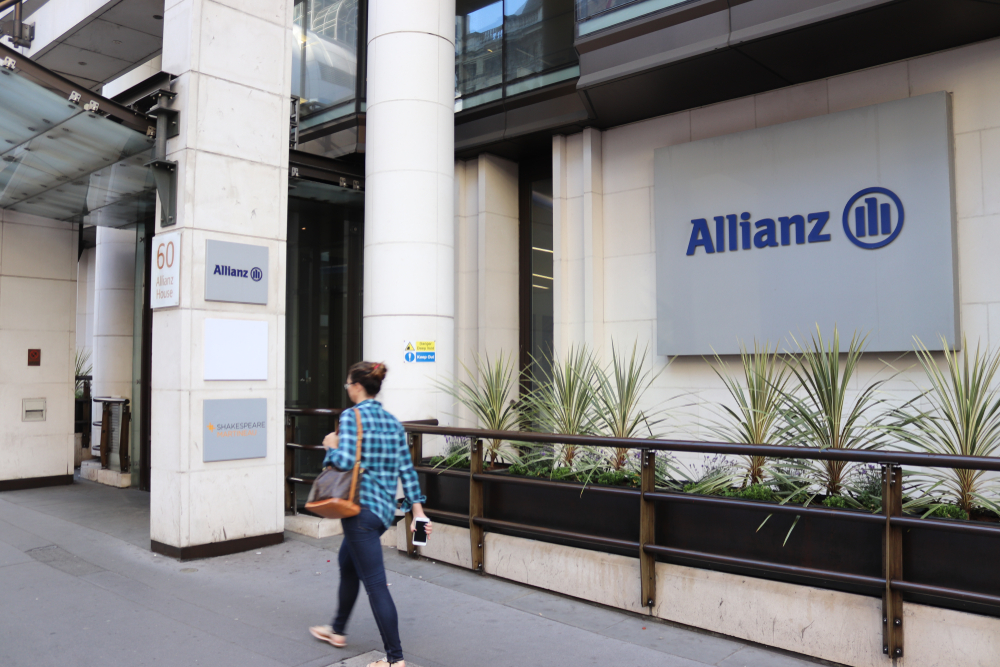Editor’s note: ImpactAlpha contributing editor Imogen Rose-Smith, a longtime senior writer for Institutional Investor, contributes a bi-weekly column on the policies, practices and strategies of the largest asset allocators, including pensions, foundations, and endowments. As Imogen says, she’s “tracking what investors do, not just what they say.”
ImpactAlpha, Sept. 7 – The fund that pays pensions to California’s retired teachers has posted a banner year.
At the same time, housing costs for the state’s current teachers are so high that many teachers can’t afford to live in the districts in which they teach. Last year Gov. Gavin Newsom signed a bill allowing school districts to use low-income tax credits to develop housing for teachers and other school employees.
There’s a connection between high investment returns and high costs for housing.
Public and private union pension funds, along with family offices, foundations, endowments and sovereign wealth funds, are significant investors in, and in some cases majority owners of apartment buildings and other housing. The entrance of institutional investors into the residential housing market both directly and through investments in real estate and private-equity funds, is one contributor to the run-up in valuations that is pricing many teachers and other essential workers out of local markets.
In ways both direct and indirect, public and private union pension funds may be investing at cross-purposes with the interests of the very people they are pledged to serve.
Split screen
In our have and have-not economy, those with assets win. Those without assets, including blue-collar and working-class individuals who don’t own their own homes or have stock portfolios, lose. Sometimes the results are two sides of the same coin.
The stock market boom and rising asset valuations have fueled rosy returns for pension funds and other institutional investors around the world.
The $246 billion New York State Common Retirement Fund recorded a gain of nearly 34%, as of March 31, according to State Comptroller Thomas DiNapoli. The $487 billion California Public Employees Retirement System, or CalPERS, had a net return on investments of 21.3% for the 12 months ending June 30. Overall, public plans of $1 billion or more logged a median gain for the year ending June 30 of more than 26%, according to the Wilshire Trust Universe Comparison Service.
The $311 billion California State Teachers Retirement System, or CalSTRS, America’s second largest pension plan, reported returns of 27.2% in the fiscal year ending June 30. The private-equity portion of CalSTRS portfolio performed even better, returning 42%.
The results “offer another measure of how we’re delivering on our promise to provide California’s hard-working teachers and their families with a secure retirement,” CalSTRS new CEO Cassandra Lichnock said in a statement.
The picture is less rosy for California’s still-working teachers, many of whom cannot afford to rent or buy houses in the districts where they teach. In Los Angeles, a median-level rental unit requires about 85% of the income of an entry-level teacher. A 2019 study by EdSource found that in about 40% of California’s school districts, first-year teachers cannot afford to rent even a modest one-bedroom apartment based on their salaries.
CalSTRS has long been considered a leader among pension funds in charting a path to sustainable investing. This year CalSTRS announced plans to invest between $250 million and $500 million a year in affordable housing investments as part of a $2 billion sustainable investment portfolio. In 2019, the Sacramento based pension plan announced that it had acquired a majority interest in multi-family real estate operator Fairfield Residential Company.
CalSTRS real estate investment policy, most recently updated in July 2021, states that the teachers’ pension plan will not “invest in strategies that are intended to capitalize on the displacement of low- income households.” Any rent regulated housing that is demolished must be replaced and anyone that is displaced rehomed.
But CalSTRS affordable housing investments represent only a small fraction of CalSTRS $39 billion real estate portfolio. Even seemingly pedestrian investments by public pensions, such as investing in residential housing, can have the effect of inflating asset values for individuals. Making investments that inflate asset prices increases the cost of living for active and future beneficiaries. Retirees are less affected, because their benefits are mostly indexed to inflation, but rising housing costs hurt current and future workers.
Additionally, pension plans that profit from attractive tax treatments can hurt the revenues, and thus public services, in their own states or municipalities.
CalSTRS is well-positioned to understand such risks. With other major asset owners, CalSTRS chief investment officer, Chris Ailman, last year co-authored a call to action for a “Partnership for Sustainable Capital Markets.”
Modern portfolio theory
Pension funds’ diversification into real estate and other real assets reflects the continued sway of ‘modern portfolio theory,” and in particular the influence of David Swenson. The longtime chief investment officer of Yale University’s $31 billion endowment, Swenson died in May after a long battle with cancer. His 2000 book, Pioneering Portfolio Management: An Unconventional Approach to Institutional Investment, advocated heavier allocations toward alternative investments, especially private equities, while diversifying away from traditional stocks and bonds.
In the dot-com crash of 2001, pension funds lost big over exposed as they were to the tech heavy stock market. At Yale, Swenson not only managed to outperform, but preserved and lowered the risk of Yale’s capital. Keen to dig themselves out of a funding holes, many public pension boards followed Swenson’s advice, encouraging, or at least allowing, their investment offices to increase their commitments to supposedly higher-yielding risk diversifiers such as hedge funds and private equity.
As it happens, the modern defined-benefit pension world recently lost another key player in Richard Trumka, the 72-year-old union leader who died suddenly after a heart attack last month.
Trumka, a third-generation coal miner who became head of the AFL-CIO in 2009, advocated for pension and healthcare rights, and pioneered shareholder advocacy. Trumka recognized the threat that private-equity practices represented to workers. But in a bid to top up depleted retirement coffers, under his watch the AFL-CIO agreed to allow an increase in capital commitments by pension plans to alternative investments, including private equity, hedge funds, and real estate.
In 2001 the average U.S. public pension plan allocated 58% of its assets to public equities, 31% to fixed income, 4% to private equity, 4% to real estate, and 0.3% percent to hedge funds according to Public Plans Data. By 2020, allocations to public equities were down to 46.5% and fixed income fell to 23%. Private equity and real estate allocations more than doubled, and hedge funds accounted for more than 6%.
Over the same time period, public defined benefit assets grew from $705 billion to $2 trillion, Public Plan Data shows. U.S. pension funds were managing more assets in more complex ways, and outsourcing more of the work to external managers.
This professionalization of the public pension investment office came at a cost. Some of the investment activities private equity managers engaged in, such as stripping pension assets from companies they acquired, were manifestly anti-worker. Some hedge fund managers who made millions of dollars off fees paid by public pension funds, made major donations to anti-labor causes, including, ironically, pension reform. And, by increasingly reeling on outside managers, public pension plans lost agency over how their money was being invested.
The ascent of the pension fund investment office was accompanied by the adoption of the credo that the chief investment officer’s fiduciary duty is purely to make the highest risk-adjusted return on capital.
It is not the job of pension plans to solve social problems. And it could be churlish to suggest that pension funds should forego booming investment returns out of concerns about rising income inequality.
But pension investment offices are working with the retirement funds of real workers in real communities. There’s little merit in delivering teachers attractive future retirement benefits at the expense of their current quality of life and wealth accumulation.
Profiting from Poverty
So great is social inequality in the U.S. that Moody’s took the unprecedented step, in October 2018, of threatening a downgrade in Treasury bonds. The problem was made worse by COVID and the accompanying disruption. Last year, Moody’s cited racial inequality and warned that recent events “have highlighted the unequal position of the Black community in particular, which is a salient and persistent feature of the inequality dynamic that exacerbates credit-related social risks in the US.”
Those risks also present opportunities. Private-equity fund managers, with their public-pension partners, have since 2008 moved into healthcare, retail and other areas of the market that provide goods and services to lower income communities. The outcomes haven’t always been good. From Dollar General to drug rehabilitation centers, private equity asset managers have, since the Great Financial Crisis of 2008, been finding increasing numbers of ways to profit from businesses that are targeting lower income communities.
Of course, a shift of capital to low-income communities can have a positive impact, if it invigorates inclusive and equitable projects in communities that have been starved of capital. But investments that have the effect of stripmining assets from communities and extracting outsized profits on the backs of residents and taxpayers are a different story.
The trick is to know which is which. Pension fund investments that profit off or exploit lower income communities may be hurting their own beneficiaries.
Take nursing homes, where research “indicates that private equity leads to worse patient outcomes and higher taxpayer spending on aggregate,” NYU’s Sabrina Howell told a House subcommittee in March. “Private-equity-owned nursing homes increase the probability of death during the stay and the following 90 days.” The toll during the period studied, Howell said, may have been the loss of more than 20,000 lives “due to private equity ownership of nursing homes.”
Private-equity firms moved into residential real estate in the aftermath of the foreclosure crisis, when they were able to snap up suburban homes at a bargain and turn them into rental properties. More recently, they’ve moved down-market, buying up units of workforce and low-income housing.
A recent Financial Times article, “Why Blackstone made a $5 billion bet on housing low-income Americans,” details why Blackstone and other private equity investors are swooping in to acquire family rental homes that are dependent on government subsidies. Blackstone paid $5.1 billon to acquire an affordable housing portfolio from insurer AIG.
Affordable housing advocates “worry about what will happen if financial firms are in charge of affordable housing assets when rent control regulations finally run out.” When rent-control regulations expire, investors can raise rates, reducing access to affordable housing. Blackstone insists it is committed to maintaining affordability. But private equity in general has an uneven track record in this regard (see, “IMPACT Community Capital raises $210 million to preserve U.S. affordable housing”).
There are also tax issues. From affordable housing to nursing homes, many of these low-income investments require some kind of tax break or government subsidy. Private market investors like Blackstone can profit from tax incentives designed to encourage affordable housing development. Private equity firms “are attempting to earn big profits by taking money out of affordable housing in ways that were not contemplated by Congress,” affordable housing expert Bobby Rozen told the Financial Times.
Such tax revenues are sorely needed, not least to top up public pension plans themselves, which will be required to pay out more money in liabilities than they currently have or will have in assets. That funding gap will either have to be filled by investment returns (unlikely) or taxpayer funds (much more likely). Pension plan contributions also make up a major part of most state and municipal governments.
By investing in tax-advantaged strategies, state and local governments are performing a type of tax arbitrage, to the benefit of Wall Street. It would be far simpler, if politically less palatable, to skip the tax-avoiding strategies, bring in more tax revenues, and put that money into the pension plan.
Universal ownership
The largest institutional investors have to spread so much money around that they essentially ‘own the market.’
Because such ‘universal owners’ can’t escape a systemic downturn, these investors have to worry about the sustainability of the economic system itself. They can’t simply diversify away systemic risks. That makes it incumbent on them to combat investment or corporate behaviors that negatively impact social and environmental systems, and thus their portfolios.
To their credit, it is not as if public pension plans and other institutional investors have not noticed the inequality of income and opportunity.
Two New York City pension plans recently announced a $250 million commitment to develop workforce housing in New York and the surrounding area in partnership with developer The Hudson Companies. Investment firms like Turner Impact Capital and Bain Double Impact do recruit public pensions and other institutions as limited partners to raise capital for workforce housing, health clinics and education.
CalSTRS has endorsed the Principles for Responsible Investment, or PRI, and works closely with organizations such as Ceres and the Carbon Disclosure Project, or CDP. CalSTRS was one of the first major investors to call for changes in the board leadership at ExxonMobil.
To assess the full impact of pension plan investments, we need to look beyond only their showcases of sustainable investing initiatives. CalSTRS, and all institutional asset owners, need to take into account, and be accountable for the negative externalities as well as the positive externalities of their entire portfolio. And this responsibility needs to lie firmly with the investment office.
As universal owners, public pension plans and other large allocators have an economic, and ethical, responsibility to take into account the overall health of the economy and the world at large, for the sake of their own long-term returns, as well as the well-being of their beneficiaries.
The deployment of pension fund billions could be determinative is crafting affordable housing solutions and approaches to meet the other needs of working families and low-income communities.
Chief investment officers, especially for public and union pension pension funds, should expand their fiduciary duties beyond making money above all else, to include finding out what their beneficiaries really need.
Imogen Rose-Smith is a contributing editor at ImpactAlpha. A longtime senior writer for Institutional Investor, she was most recently a fellow in the Office of the Chief Investment Officer of the University of California.
Catch up on all of Imogen’s Institutional Impact columns.











